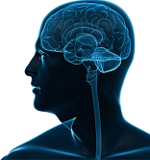Headaches and Photosensitivity following Concussion – Review of the Literature
As discussed in prior posts, the most common symptom of post-concussion syndrome (PCS) is post-traumatic headache accompanied by photophobia (heightened sensitivity to light.) These symptoms can interfere with both work and activities of daily living. The Canadian Journal of Neurological Sciences recently reviewed the literature to determine the current level of knowledge concerning the pathophysiology, the underlying mechanisms, producing these symptoms.
Understanding these mechanisms is key to providing more effective care. The paper notes, based on the literature review, that headache occurs in up to 88% of sports-related concussions, followed closely and concomitantly by photophobia. Approximately 8-35% of post traumatic headaches will “chronicize” (become a long-term problem.)
The paper begins by acknowledging that the pathophysiology of these symptoms is not yet fully understood and that further research is needed. It does, however, identify several promising findings, including the following:
- Chronic headaches occur more frequently in concussion patients with some past history of migraine. (This has been discussed in past posts.) The researchers note findings indicating that “head trauma may be a trigger for transformation from episodic to chronic migraine.”
- Evidence supports the role of inflammation; with injury to the central nervous system, microglia, the main immune cells, become activated and can assume either pro or anti-inflammatory roles.
- Advanced imaging techniques, such as MRI with diffusion-tensor imaging and proton spectroscopy, detects white matter injury patterns that correlate with post-traumatic headache.
- Concussion patients with post-traumatic headache have been shown to have lower cerebral blood flow in the right frontal lobe and increased cerebral blood flow in the left parietal lobe, compared to controls (these findings may be because of diffuse axonal injury and inflammation; however causality has yet to be determined.)
- There is evidence of a genetic predisposition to symptoms after a concussion – producing a lower threshold to symptom development.
- Functional MRI shows increased activity in patients with photophobia in the trigeminal nucleus, superior colliculus, thalamus and cortex.
- Glutamate toxicity may play a role; it is known that glutamate release from astrocytes and microglia occurs after TBI.
The review authors conclude that “a multifactorial explanation to post-traumatic headache and photophobia is evident” with “interactions between injured cervical, cranial and central neurological structures” and that the respective contributions of these structures “probably vary between individual patients.”
One important takeaway from this review is that chronic post-traumatic headaches and photophobia do likely have a pathophysiological basis, that these symptoms are caused by injury, not by imagination.

